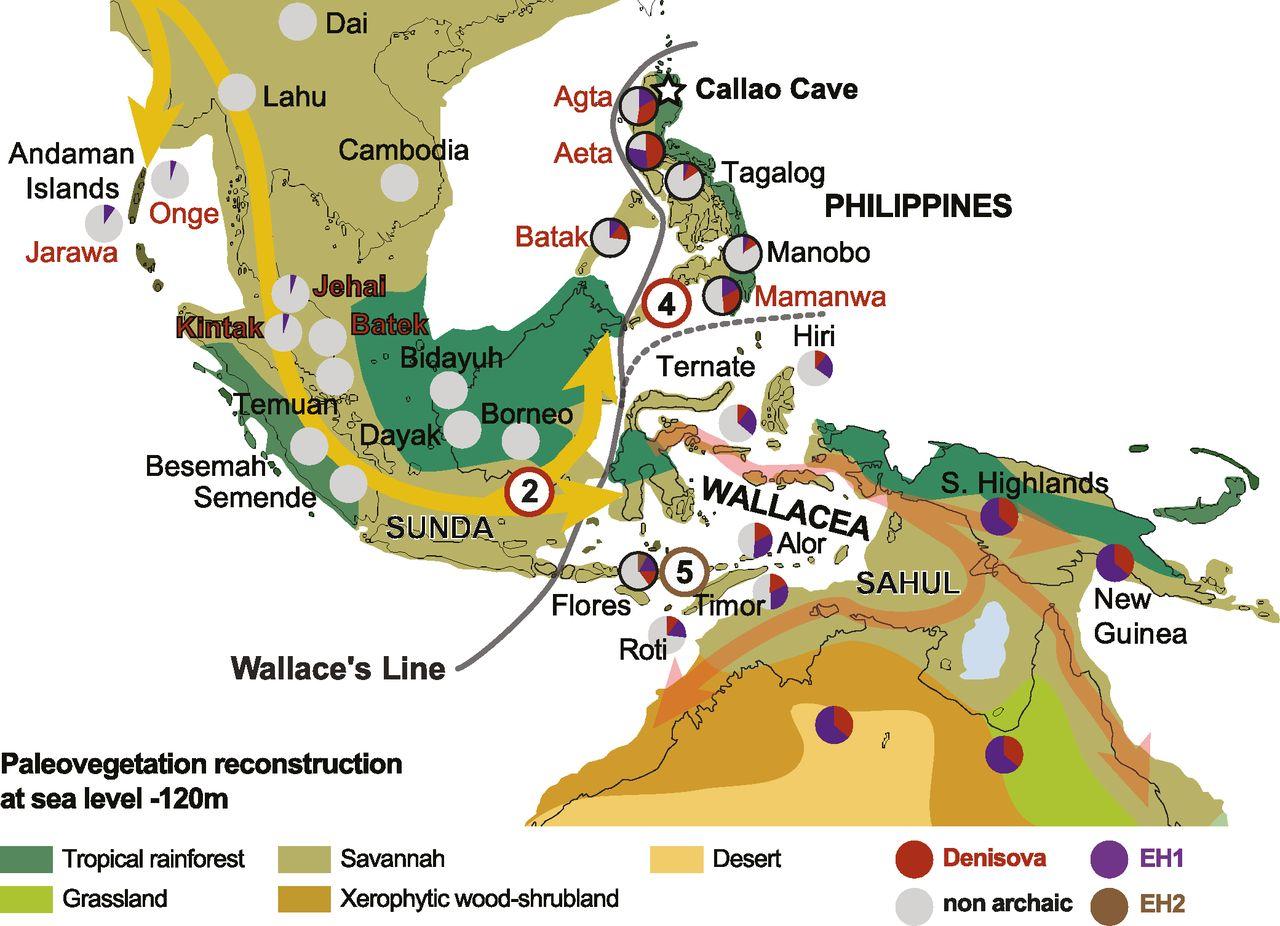New genetic analysis reveals breeding history of modern humans
Genetic analysis has revealed that the ancestors of modern humans interbred with at least five different archaic human groups as they moved out of Africa and across Eurasia.
While two of the archaic groups are currently known - the Neandertals and their sister group the Denisovans from Asia - the others remain unnamed and have only been detected as traces of DNA surviving in different modern populations. Island Southeast Asia appears to have been a particular hotbed of diversity.
Published in the Proceedings of the National Academy of Sciences (PNAS), researchers from the University of Adelaide’s Australian Centre for Ancient DNA (ACAD) have mapped the location of past “mixing events” (analysed from existing scientific literature) by contrasting the levels of archaic ancestry in the genomes of present-day populations around the world.
“Each of us carry within ourselves the genetic traces of these past mixing events,” says first author Dr João Teixeira, Australian Research Council Research Associate, ACAD, at the University of Adelaide. “These archaic groups were widespread and genetically diverse, and they survive in each of us. Their story is an integral part of how we came to be.
“For example, all present-day populations show about 2% of Neandertal ancestry which means that Neandertal mixing with the ancestors of modern humans occurred soon after they left Africa, probably around 50,000 to 55,000 years ago somewhere in the Middle East.”
But as the ancestors of modern humans travelled further east they met and mixed with at least four other groups of archaic humans.
“Island Southeast Asia was already a crowded place when what we call modern humans first reached the region just before 50,000 years ago,” says Dr Teixeira.
“At least three other archaic human groups appear to have occupied the area, and the ancestors of modern humans mixed with them before the archaic humans became extinct.”
Using additional information from reconstructed migration routes and fossil vegetation records, the researchers have proposed there was a mixing event in the vicinity of southern Asia between the modern humans and a group they have named “Extinct Hominin 1”.
Other interbreeding occurred with groups in East Asia, in the Philippines, the Sunda shelf (the continental shelf that used to connect Java, Borneo and Sumatra to mainland East Asia), and possibly near Flores in Indonesia, with another group they have named “Extinct Hominin 2”.
“We knew the story out of Africa wasn’t a simple one, but it seems to be far more complex than we have contemplated,” says Dr Teixeira.
“The Island Southeast Asia region was clearly occupied by several archaic human groups, probably living in relative isolation from each other for hundreds of thousands of years before the ancestors of modern humans arrived.
“The timing also makes it look like the arrival of modern humans was followed quickly by the demise of the archaic human groups in each area.”

Figure 1
Proposed route of AMH movement out of Africa, around 60 to 50 ka (1, 4), following areas of savannah-like habitat reconstructed from BIOME4 CO2 climate models. Around 55 to 50 ka, a small founding AMH population met and interbred with Neandertals somewhere in western Eurasia (blue circled N), resulting in a Neandertal genomic signal of around 2% that was subsequently distributed globally outside of Africa (1, 2, 4). Sometime after the first event, the AMH population split, with one of the branches leading to the ancestors of Europeans and the other to the common ancestor of South and East Asians, Australo-Papuans, and related populations. Genetic data (33) suggest that as the latter moved across South Asia, it experienced an initial introgression event (purple circled 1) with an unknown hominin (EH1) that was genetically roughly equidistant to Denisovans and Neandertals. The resulting genomic signal (estimated to have originally been 2.6 to 3.4%) is detected in groups as geographically distant as South Asians, Andaman Islanders, and Aboriginal Australians (33), so we have tentatively positioned the event in northern India. In East Asia, a subsequent introgression with a Denisovan group closely related to the Altai specimen also appears to have taken place (red circled 3).

Figure 2
Yellow and red arrows indicate the inferred route of AMH movement through ISEA around 50 ka (44) (shown with lowered sea levels), following reconstructed areas of savannah-like habitat as above. Modern-day hunter-gatherer populations with genetic data are shown in red, and farming populations are shown in black. The estimated genomic content of EH1 (purple), Denisovan (red), EH2 (brown), and nonarchaic (gray) in modern-day populations (28, 33, 40, 42) is shown in pie charts, as a relative proportion to that seen in Australo-Papuans (full circles). Gray All populations containing large amounts of Denisovan genomic content are found east of Wallace’s Line. Independent introgression events with Denisovan groups are inferred for both the common ancestor of Australo-Papuan, Philippines, and ISEA populations (red circled 2) and, separately, for the Philippines (red circled 4). The signal for a separate introgression with an unknown hominin on Flores, recorded in genomic data from modern-day populations, remains less secure (brown-circled 5). The precise location of introgression events 2, 4, and 5 currently remains unknown. Pie charts with black borders have estimated hominin proportions.
Further reading
Using hominin introgression to trace modern human dispersals, Proceedings of the National Academy of Sciences (PNAS)
